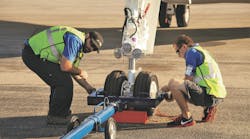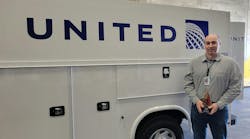Those That Have . . .
And those that will
They say there are those that have and those that will. I worked for an aircraft management firm. We maintained, scheduled, and supplied crews to 13 aircraft for various owners. The fleet was a mix of Lear 25s and 31s, Cessna Citations, Falcon 10s and 50s, with a mix of helicopters and piston twins thrown in.
I worked the second shift. That was a good shift because the aircraft were usually home and the more in-depth work was accomplished then. I considered myself a very competent technician and pilot, have been interested in planes since I was five. Held all the ratings too, including helicopter, with nearly 1,000 hours total time logged.
We were performing a scheduled inspection on a Citation II. The aircraft was scheduled for a flight at 7 the next morning. The Citation has cable-operated flaps and flight controls with hydraulically actuated landing gear and thrust reversers. I had just completed the landing gear checks with no defects noted.
Because the thrust reversers were also hydraulically actuated we decided to go right into those checks. The hydraulic mule was left running while we down jacked the aircraft. I climbed back into the cockpit and sat in the pilot's seat to deploy the reversers. While sitting there, I remembered that I had not checked the gear handle lockout solenoid during the gear checks. This check was not called out in the gear swing procedure but I like to be conscientious and check everything. I have seen enough strange conditions in aircraft; I wanted to be thorough.
I put my hand on the gear handle. It moved! I could hear the mule load up and I slammed the handle back down. As I looked to my left, the technician just outside the cockpit window suddenly grew taller. Yes, I had geared up the airplane in the hangar.
Everything was turned off, and I climbed out to assess the damage. The main gear utilizes side stay actuators, so the weight of the airplane combined with the very short time that the hydraulics had been applied had prevented the main gear from moving. The nose gear however retracts forward. When the hydraulics unlocked the nose gear actuator, the weight of the nose simply pushed the gear into the wheel well.
Why had the gear handle moved? We began to troubleshoot that issue. We found two failures had contributed to the incident (well, three if you count mine). The right main gear squat switch had failed in the "on ground" mode while the gear handle lockout pin had stuck in the "in flight" mode. The first failure had been masked by the second. What a great find had it not been for the embarrassing way we found it. All items were repaired and the aircraft was returned to service.
Today it is described in human factors training, but not back then. Thinking back on my early days as a green A&P mechanic I realize now that I was prone to this type of incident. How many times had I touched a gear handle without thinking? How many times had I deviated from inspection procedures because I knew the systems and knew I was good? It happened more than 20 years ago yet still when I get into a cockpit the first place I look is the gear handle. Nothing gets touched until that handle is where it belongs.
Editor's Note: One of the ways that many of us learn safe maintenance practices is through the lessons learned from someone's mistakes or oversights. If we can learn from others mistakes or share our own with others, everyone is more knowledgeable, and safety is enhanced. So send us your story of an incident that happened to you or someone you know.
AMT
"Lessons Learned"
1233 Janesville Avenue
Fort Atkinson, WI 53538
or e-mail to [email protected]





